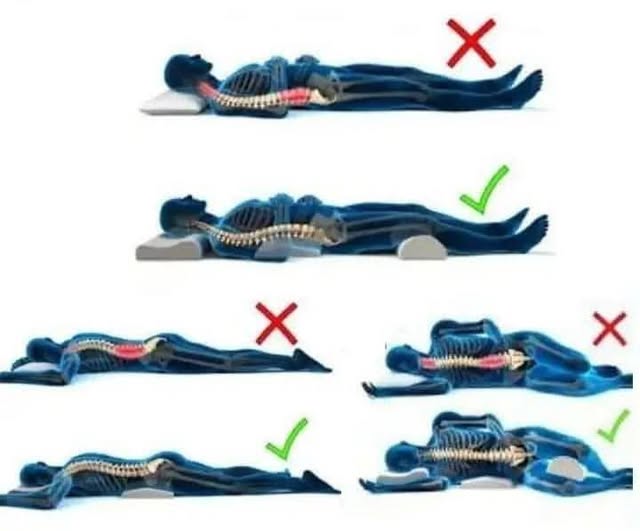When it comes to improving our health, most of us automatically think about eating healthier meals, getting in more physical activity, or finding ways to manage our stress levels. But there’s one critical aspect that often gets overlooked, even though we do it every single night—our sleeping posture.

Believe it or not, the way you position your body while you sleep plays a huge role in your overall health, affecting everything from how well your spine stays aligned to how efficiently your organs function. It might sound minor, but this one detail could be the missing piece in your daily wellness routine. Consider that we spend roughly one-third of our lives sleeping—that’s thousands of hours every year where our body maintains one consistent posture. So if that posture is slightly off, it’s not hard to imagine how it might lead to chronic aches, poor sleep quality, or even long-term health issues.
Waking up with a stiff neck, a sore back, or tingly, numb arms isn’t just bad luck; more often than not, it’s your body signaling that your sleep alignment is off. Even if you’re hitting your sleep goals and getting the recommended seven to eight hours a night, the quality of your rest could still be suffering due to poor posture. Some sleep positions are more harmful than others. One of the worst offenders is sleeping on your stomach. While it may feel cozy at first, it actually puts strain on your neck because you have to twist it to the side just to breathe, and it also flattens the natural curve of your spine. Over time, this can lead to lower back pain, neck stiffness, and even recurring headaches. If you often wake up feeling tight or uncomfortable, stomach sleeping could be the reason. Another problem posture is sleeping with your arms overhead or under your pillow.
These positions may seem harmless but can lead to restricted circulation and compressed nerves, which results in the familiar “pins and needles” sensation in your hands and arms. If this continues long-term, it could develop into numbness or even nerve damage, so it’s better to keep your arms relaxed at your sides or gently bent in front of you. The fetal position, which is especially popular among side sleepers, can also create issues if done too tightly. While sleeping on your side has its benefits, curling up into a tight ball can compress your lungs, restrict breathing, and put added pressure on your spine.
Instead, opt for a more relaxed side posture with your legs slightly bent. Now, if you’re wondering what the best sleep position is, sleep experts agree that sleeping on your left side is the healthiest choice. This position helps aid digestion because gravity allows your stomach and digestive system to process food more efficiently. It also promotes better circulation, which is especially helpful for pregnant women or those with high blood pressure. Additionally, left-side sleeping helps reduce acid reflux by keeping the stomach below the esophagus, supports spinal alignment by cradling the natural curve of your back, and can even help people with sleep apnea or snoring by keeping the airway more open. Switching sleep positions might feel awkward at first, but with the help of a body pillow or wedge pillow, you can train yourself to become more comfortable on your left side. You don’t need to completely remodel your bedroom to sleep better either—small changes can make a big difference. Start with your pillow. Your head should stay in line with your spine. Side sleepers should go with a firm pillow for neck support, back sleepers need a medium loft pillow, and stomach sleepers—if they must—should use the flattest option available. Placing a pillow between your knees while sleeping on your side helps align your hips and spine, reducing pressure on your lower back. A quality mattress is also essential; it should support your spine’s natural curve. Too soft and your body sinks, misaligning your posture; too firm and pressure points can form. A memory foam or hybrid mattress can provide the right balance of support and comfort. Training your body to adopt a better sleep posture takes consistency. Start each night in your target position and use pillows as barriers to keep yourself from rolling into less ideal poses. Pay attention to how your body feels in the morning. If you wake up sore, it’s likely time to adjust. And if nothing helps, consulting with a chiropractor or sleep specialist can offer deeper insights. Ultimately, good sleep posture is just as important as what you eat or how often you move. Taking a little time to adjust your sleeping position can improve your energy, reduce pain, and help you wake up feeling truly refreshed. So before you close your eyes tonight, take a moment to realign your body—you’ll thank yourself in the morning.





